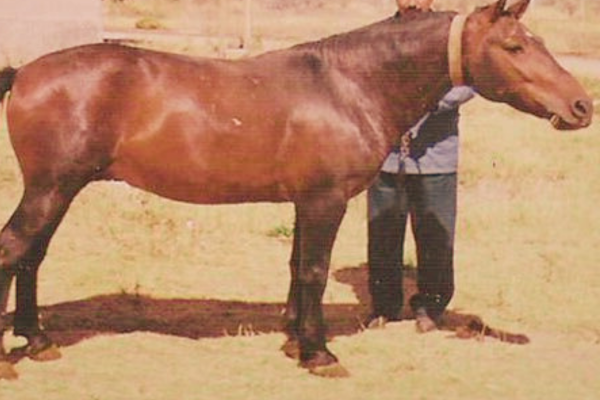The Uzunyayla Horse, a distinguished and rare breed from Turkey, emerged in the 19th century, marking a significant development in the country’s equine history. As one of the three primary indigenous horse breeds of Turkey, the Uzunyayla stands out for its remarkable endurance and resilience.
These horses, known for their steady and measured pace, are primarily utilized for general riding. Their ability to cover long distances effortlessly, a hallmark of the breed, underscores their importance and uniqueness in the realm of equestrian breeds.
History:
The Uzunyayla horse stands as a fascinating study in breed development and cultural heritage. From its ancestral lineage to contemporary status, its journey reflects both natural adaptations as well as human-influenced breeding methods.
Ancestral Traces with Kabarda Breed:
The Uzunyayla horse’s lineage can often be traced back to Kabarda breed, originally found in northern Caucasus region. This suggests an extensive exchange of genetic material and cultural exchange, reflecting historical movements across regions.
Development in Turkey during the 19th Century:
Uzunyayla horses first officially emerged as a distinct breed in 1854 in Turkey, marking the beginning of a breeding program designed to foster their unique characteristics and traits.
Era of Pure Breeding Until 1930:
From 1876 until 1930, Uzunyayla horses were bred in Turkey within an enclosed environment and with pure breeding techniques to secure the breed’s distinct characteristics, guaranteeing they retained their distinctive physical and temperamental traits. This period was essential in cementing these traits within this unique breed of horse.
Introduce of Nonius and Anadolu Bloodlines:
Early 20th-century innovation saw a major transformation of Uzunyayla breed’s development with the introduction of Nonius and Anadolu breeds. This introduction of new genetic material wasn’t simply used for breeding purposes; rather, its aim was to enhance capabilities, resilience, and adaptability of Uzunyayla dogs.
Contemporary Status and Future Prospects:
At present, Uzunyayla horses lack formal support from an association or recognized stud book; nevertheless, breeders and enthusiasts have expressed hope and optimism in relation to its formation.
They believe formal recognition and documentation of breeds is crucial to ensure its preservation and promotion.
The Need for Conservation and Recognition:
Uzunyayla horses owe their survival to conservation efforts and recognition within equestrian communities. Establishing an association or registry would not only recognize their historical importance but also aid in maintaining genetic purity while showcasing unique qualities.
Overall, the Uzunyayla horse represents an integral chapter in equestrian history. From its possible roots in northern Caucasus to careful breeding in Turkey and then formal recognition and conservation efforts worldwide, its significance cannot be overstated.
Physical Characteristics:
Featuring a sturdy and muscular build, Uzunyayla horses typically display strong back, an arched shoulder, sturdy legs and thick coat that ranges from bay to gray in hue – an adaptation to cold winter climates of their homeland. At 14-15 hands tall they present an overall balanced and harmonious physique.
Temperament:
These horses are well known for their calm and gentle disposition. With intelligence and willing willingness to work, these horses make ideal candidates for various equestrian activities and form strong bonds with their handlers that display both trustworthiness and cooperation.
Uzunyayla Horse Use and Adaptability:
Once used by nomads for transportation and agricultural work, these horses have since taken on multiple modern roles ranging from competitive sports competitions, leisure riding programs and therapeutic services to endurance riding in rugged terrains. Their endurance makes them great companions.
Cultural Significance:
Within Turkish culture, the Uzunyayla horse stands as more than just an icon; it represents their nation’s equestrian legacy and festivals and competitions celebrating these horses help keep these traditions alive while creating a sense of community and continuity.
Conservation Efforts:
Like many native breeds, Uzunyayla horses face challenges from modern breeding practices and habitat loss.
Conservation efforts must take place to preserve this breed’s genetic diversity and cultural significance – breeding programs and awareness campaigns have already begun in order to ensure their survival and proliferation.

